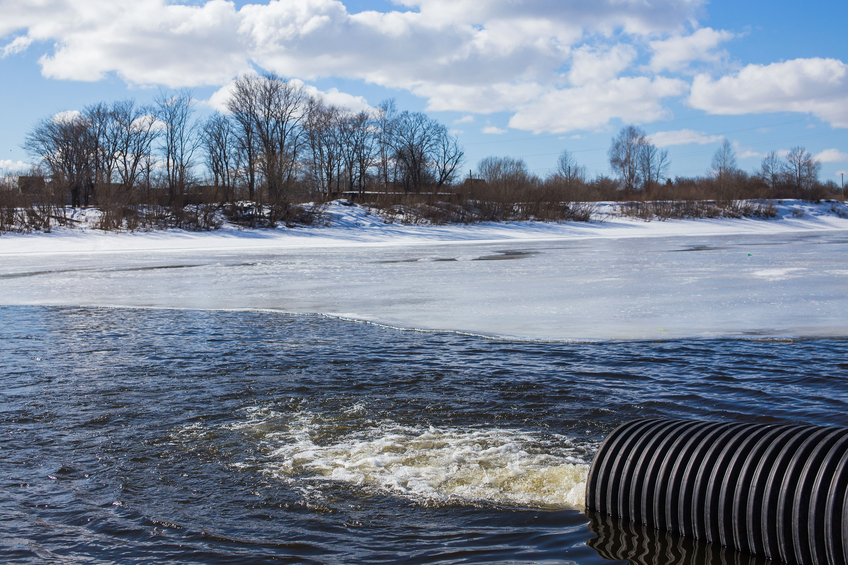South Carolina Civil 30 PDH Discount Package 2
Curing Portland Cement Concrete Pavements (C05-006)
Hydrologic Analysis of Interior Areas (C11-002)
Rational Method Hydrologic Calculations with Excel 2 (C01-010)
Illicit Discharge Detection and Elimination (C05-002)

This online engineering PDH course provides information and guidance on the use of RCC in dams and other civil works structures. Elements discussed include investigation and selection of materials, mixture proportioning, design and construction considerations, construction equipment and techniques, inspection, and performance.
The American Concrete Institute (
RCC may be considered for application where no-slump concrete can be transported, placed, and compacted using earth and rock-fill construction equipment. Ideal RCC projects will involve large placement areas, little or no reinforcement, and little or no embedded metal work or other discontinuities such as piles. Application of RCC should be considered when it is economically competitive with other construction methods. It may be considered in lieu of gabions or riprap for bank protection, especially in those areas where riprap is scarce. It may be considered for large work pads, aprons, or paved areas, massive open foundations, base slabs, cofferdams, massive backfill, emergency repairs, and overtopping protection for embankment dams. It may be used in lieu of conventionally placed concrete in concrete gravity and arch-gravity dams. RCC may be considered for use in levees where foundations are adequate and may also be used in caps for jetties to reduce the amount of required rock.
This 8 PDH online course is applicable to civil, structural or geotechnical engineers, as well as design and construction personnel involved with the planning, design, construction of roller-compacted concrete structures.
This PE continuing education course is intended to provide you with the following specific knowledge and skills:
- RCC applications, objectives and advantages
- Investigation and selection of materials
- Mixture proportioning considerations and selection
- Understanding the properties of RCC
- Design and construction considerations
- Construction methods and equipment
- Quality control and quality assurance in RCC construction
- RCC performance
In this professional engineering CEU course, you need to review the US Corps of Engineers Publication EM 1110-2-2006, "Roller Compacted Concrete".
Upon successful completion of the quiz, print your Certificate of Completion instantly. (Note: if you are paying by check or money order, you will be able to print it after we receive your payment.) For your convenience, we will also email it to you. Please note that you can log in to your account at any time to access and print your Certificate of Completion.

This online engineering PDH course provides guidance on details of concrete curing practice as they pertain to construction of Portland cement concrete pavements. It is organized around the major events in curing pavements: curing immediately after placement (initial curing), curing during the period after final finishing (final curing), and termination of curing and evaluation of effectiveness of curing.
Curing has long been recognized as an important process in constructing durable concrete pavements. Proper curing allows the concrete to develop its potential strength and durability. Inadequate curing can result in surface damage in the form of plastic shrinkage cracking, spalling, and erosion of paste. Since many variables influence the choice of curing materials and when and how to apply curing, the material presented places particular emphasis on attention to details with respect to moisture retention and concrete temperature control.
This 5 PDH online course is applicable to civil, structural and geotechnical engineers, as well as design and construction personnel involved with the design and installation of concrete pavements.
This PE continuing education course is intended to provide you with the following specific knowledge and skills:
- Selection of curing materials and procedures
- Analysis of concrete properties and jobsite conditions
- Knowing how to adjust the curing practice to account for specific project conditions
In this professional engineering CEU course, you need to review the Federal Highway Administration Publication FHWA-RD-02-099, "Guide for Curing of Portland Cement Concrete Pavements".
Upon successful completion of the quiz, print your Certificate of Completion instantly. (Note: if you are paying by check or money order, you will be able to print it after we receive your payment.) For your convenience, we will also email it to you. Please note that you can log in to your account at any time to access and print your Certificate of Completion.

This online engineering PDH course provides guidance in hydrologic analysis of interior areas for planning, design investigations, and flood risk reduction.
Floods have social, environmental, and economic consequences and they directly impact people and communities. Some of the immediate impacts of flooding includes loss of human life, loss of livestock, and damages to properties and crops.
This course provides information of interest to planners and designers of interior system involving flood loss reduction measures and actions. Interior area investigations are differentiated from other studies only by the uniqueness of the hydrologic analysis requirements for the flood loss reduction measures commonly used. Interior area planning studies are an essential aspects of feasibility studies.
This 11 PDH online course is applicable to civil, environmental, and stormwater management engineers as well as other technical personnel interested in learning more about hydrologic analysis of interior areas.
This PE continuing education course is intended to provide you with the following specific knowledge and skills:
- Understanding the basic concepts and considerations pertinent to hydrologic studies of interior areas
- Learning the approaches, strategies, and requirements of interior hydrologic engineering studies
- Learning about the analysis methods and procedures for riverine and coastal interior areas
- Familiarizing with flood risk management measures
- Learning about the analysis of residual risk and resiliency
- Learning about a case example of the coincident frequency
In this professional engineering CEU course, you need to review the US Corps of Engineers Publication EM 1110-2-1413 "Hydrologic Analysis of Interior Areas".
Upon successful completion of the quiz, print your Certificate of Completion instantly. (Note: if you are paying by check or money order, you will be able to print it after we receive your payment.) For your convenience, we will also email it to you. Please note that you can log in to your account at any time to access and print your Certificate of Completion.

This online engineering PDH course will enable you to calculate peak storm water runoff rate using the Rational Method equation in either U.S. or S.I. units, including determination of runoff coefficient, calculation of time of concentration, and determination of design rainfall intensity. It will also prepare you for the use of Excel spreadsheets to efficiently make the calculations.
Calculation of peak storm water runoff rate from a drainage area is often done with the Rational Method equation (Q = CiA). Use of Excel spreadsheets for calculations with this equation and for determination of the design rainfall intensity and the time of concentration of the drainage area, are included in this course. The parameters in the equations are defined with typical units for both U.S. and S.I. units.
This 1 PDH online course is applicable primarily to civil engineers, hydraulic engineers, highway engineers, and environmental engineers, design professionals, technical and construction personnel who are interested in gaining a better understanding of the rational method hydrologic calculations using Excel.
This PE continuing education course is intended to provide you with the following specific knowledge and skills:
- Knowing the parameters and their U.S. and S.I. units to be used in the Rational Method equation
- Ability to calculate peak storm water runoff rate with the Rational Method equation, using either U.S. or S.I. units
- Ability to place a given soil into one of the four SCS soil groups based on its measured minimum infiltration rate
- Ability to place a given soil into one of the four SCS soil groups based on its description
- Ability to determine a value of the Rational Method runoff coefficient based on land use, soil group, and slope of the watershed
- Ability to calculate the overland sheet flow travel time for a watershed using the Manning Kinematic equation
- Ability to calculate the shallow concentrated flow travel time for a watershed using the NRCS method
- Ability to calculate the open channel flow travel time for a watershed using the Manning equation
- Knowing the form of the equation used for rainfall intensity as a function of storm duration for a specified return period
- Familiarity with methods for using Excel spreadsheets to make the different types of calculations
In this professional engineering CEU course, you need to review the course document tilted, "Rational Method Hydrologic Calculations with Excel".
Upon successful completion of the quiz, print your Certificate of Completion instantly. (Note: if you are paying by check or money order, you will be able to print it after we receive your payment.) For your convenience, we will also email it to you. Please note that you can log in to your account at any time to access and print your Certificate of Completion.

This online engineering PDH course presents EPA's BMP for identifying and eliminating non-stormwater discharges to storm sewers to improve runoff stormwater quality.
Non-storm water discharges are typically the result of unauthorized connections of sanitary or process wastewater drains to storm sewers. These connections are common, yet often go undetected. Non-storm water discharges can include discharges of process water, air conditioner condensate, non-contact cooling water, vehicle wash water, or sanitary waste.
EPA recognizes that these discharges are significant sources of pollutants, and unless regulated by an NPDES permit, they are also illegal. Therefore the EPA published the Storm Water Phase II Rule on
This 5 PDH online course is applicable to municipality owners and/or operators, construction contractors/workers, site developers, engineers, managers, and all other personnel involved in the detection and elimination of illicit discharges.
This PE continuing education course is intended to provide you with the following specific knowledge and skills:
- Types and methods of illicit discharges
- Applicability
- Siting and design criteria
- Maintenance and cost considerations
- Failing Septic Systems
- Industrial/Business Connections
- Recreational Sewage
- Sanitary Sewer Overflows
- Identifying Illicit Connections
- Wastewater Connections to the Storm Drain System
- Illegal Dumping
Once you complete your course review, you need to take a multiple-choice quiz consisting of twenty five (25) question ns to earn 5 PDH credits. The quiz will be based on this EPA publication.
Upon successful completion of the quiz, print your Certificate of Completion instantly. (Note: if you are paying by check or money order, you will be able to print it after we receive your payment.) For your convenience, we will also email it to you. Please note that you can log in to your account at any time to access and print your Certificate of Completion.